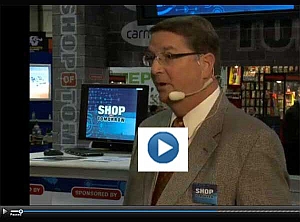
 By Bob Chabot, Contributing Editor By Bob Chabot, Contributing EditorThe Scan Tool MazeEnsuring that scan tool purchases advance vehicle serviceabilityThe role of scan tools has become both essential and critical for the complete and safe diagnosis and repair of modern automobiles. According to John Jenkins, the founder of CAS of New England, the independent aftermarket shop has to wrestle with a number of factors when it comes to scan tool purchase decisions that will move vehicle serviceability forward. According to Jenkins, the scan tool industry’s marketing vocabulary is a primary source of confusion for aftermarket facilities making purchases. He emphasized that to make sound purchases, buyers need to understand and then differentiate between four types of scan tools — OEM, specialty aftermarket, general aftermarket and OEM-level scan tools. Buyers should be cautious when they see this last term; it is just a misleading “marketing” term that does not guarantee that scan tools labeled or described as such provide the identical functionality as a factory scan tool.
The push toward OEM scan toolsMany technicians in aftermarket shops are frustrated with aftermarket scan tools. Incomplete coverage, a lack of functionality necessary for some repairs and the cost of ongoing updates are just some of the concerns that push aftermarket facilities towards OEM (i.e. factory) tooling.“There are certain efficiencies that can be realized with OEM tooling, especially when car counts for a specific automaker at a facility are high enough,” said Jenkins. “I’ve seen technician productivity increase by as much as 38 percent using OEM tools.” He notes that factory tools more accurately replicate the topology of the automaker’s vehicles’ electronic control modules (ECMs); include more functionality since more calibration files, data streams and algorithms are incorporated; and have access to key coding and security system is usually more complete. “The desire of some shops to remain competitive and stay current is another driver,” Jenkins added. “So too are bad experiences with less capable tools, especially when a facility has high car counts for one or more automakers.” He explained that the opportunity cost associated with sending a car that one has in their shop elsewhere to be repaired is significant. “Based on a 50/50 parts to labor mix and a shop rate of $80 per hour, this translates to $160 per hour lost revenue for shops.” The lure of aftermarket scan toolsThe initial cost of entry into buying and using factory scan tools, as a percentage of gross profit margin, can be huge, which in turn creates the market for aftermarket scan tool makers. “But there is confusion over what tool to buy, as well as the compatibility between various aftermarket tools that a shop uses,” Jenkins stated.“In addition, many technicians are still uncomfortable in a Windows/PC world, rather than handheld scan tools, which many tool manufacturers are moving toward.” The emergence of smart devices, such as phones and tablets, just adds one more layer of uncertainty to the purchase equation. When juxtaposed against the much higher cost of factory tooling, other concerns keep shops and technicians from choosing OEM tools. For example, there is the fear of obsolescence and having to replace an already expensive factory tool or lose the ability to repair some models. In addition the cost of maintaining multiple OEM scan tools with updates and service information and tool subscriptions can be surprisingly high in some cases, such as the case of BMW. Jenkins also noted that in some cases, such as Ford, functionality for a shop’s online Windows/PC tool could just stop if a service information subscription wasn’t renewed in time. In this event, the aftermarket repair facility loses not only access and capability to repair incoming models, but also the same for older models that the shop was already servicing. In addition, some automakers charge an added fee when shops renew late. Like being between a rock and a hard place, this quandary leaves aftermarket facilities in a pinch. Do they stay the course and do nothing? Do they stick with aftermarket tools only? Do they specialize in one, two or three vehicle lines with factory tools? Do they contract out other lines or problems their tools lack the functionality for (if they even know that) to other shops or mobile diagnostic specialists who have the factory tools to perform tasks such as bidirectional controls, complete ECM reflashes or deal with vehicle security issues? Scan tool trends shaping the future of vehicle serviceability“For a single location independent aftermarket shop, owning a high-quality, general purpose aftermarket scan tool is a good first line of attack — it’s quick, easy and dependable for most situations,” Jenkins advised. “Next, the second type of scan tool that this type of shop will need is a specialty scanner that can fill the holes of the primary general purpose tool. After that, once a facility knows it has sufficient car counts, owning one or more factory tools is a feasible option, followed by purchasing a J2534 pass-through device.”Using a mobile diagnostic super tech service is a good option for smaller operations, Jenkins suggested. “Typically, these businesses have multiple OEM tools on-board their service vehicle that are 3G/4G Internet-enabled. They also have more ongoing experience with problems that may be a less frequent occurrence for the shop, but more commonplace for the mobile tech. These services enable a fix that includes some profit for the shop, is non-competitive in nature, avoids having to send a customer or their vehicle elsewhere, and is transparent to the customer as well.” “I can see small groups of shops increasingly evolving into pods of shops, ” said Jenkins. These pods could pool resources and share costs, which would allow the combined purchase of factory or better quality aftermarket scan tools. “Within these pods, tools could be designated a specific shop location as their home base, then scheduled for use by other shops within the pod, using courier services or employees to mule tools between shops as needed. “Another arrangement that aftermarket shops might use is what I call a hub-and-spokes pattern,” Jenkins continued. In this scenario, multiple OEM scan tools are kept at a central ‘hub’ location manned by more highly skilled technicians. The hub also advises the ‘spoke’ outlets about the viability of repairs and other issues. If necessary, the spoke shops will send more difficult work to the hub. “I see the hub-and-spoke arrangement being used more and more by multi-store businesses. It allows them to better leverage their top technicians who have the skill to use the full functionality available from a tool.” “The trend by scan tool manufacturers toward single channel sourcing for all orders is also creating problems for independent aftermarket service/repair facilities,” Jenkins shared. The lack of competition is slowing delivery and availability for some tools. “Another growing issue is that while providing a Web-based solution for tools delivery is easy, that same Web-based solution is not so easy or effective when it comes to scan tool repairs. In addition, he demonstrated that the Web-based delivery of scan tool information has led to some automakers moving toward shutting down tools and/or penalizing owners with high fees when subscriptions expire before subscriptions are renewed. Is there a scan tool Holy Grail?“Many in the independent aftermarket fear getting out-maneuvered,” Jenkins stated. “For example, telematics services, such as General Motors’ On-Star are viewed as a threat by some. Even some scan tool manufacturers wonder if and how this kind of service will affect them.” He said that it is important that the aftermarket respond with a competitive alternative. In addition, cloned OEM hardware and software is becoming an issue for all parties. “Whatever actions are taken to limit/stop cloning will affect what the future of scan tool development looks like.”Jenkins noted that some still are looking for the ‘Holy Grail’ solution that brings together everything a shop needs: a J-2534 common interface for all OEMs, daily service information subscriptions available for all automakers, one smart scan tool device (e.g. tablet, phone) that can handle all OEMs, cloud computing and more. The hurdle? Shops don’t all agree on everything, nor do all scan toolmakers, so expecting all automakers to agree easily is unrealistic. It may happen one day, or approach that, with the adoption of open standards and common scan tool data stream templates used by all scan tool manufacturers. But it won’t happen any time soon, nor will it occur if profits are given away. Just think about what it would take to get Toyota, BMW and Ford all on the same page here, let alone along with all the scan toolmakers and the professionals who service vehicles. In the near term, Jenkins suggested, the independent aftermarket can leverage the collaborative relationships that certain organizations — such as the Equipment and Tool Institute, the National Automotive Service Task Force and the Society of Automotive Engineers — have with automakers. The goal should be to further the understanding that moving the vehicle serviceability horizon from end-of-warranty to the full lifetime of the vehicle, wherever it is performed, is in everyone’s best interests — consumers, automakers, tool and equipment manufacturers and service/repair professionals. “No doubt, technological change will continue,” Jenkins concluded. “What is certain is that the wants, needs and desires of independent aftermarket shop owners of scan tools haven’t changed over many years. There is great opportunity for all who listen and respond to aftermarket customer wishes.” |



